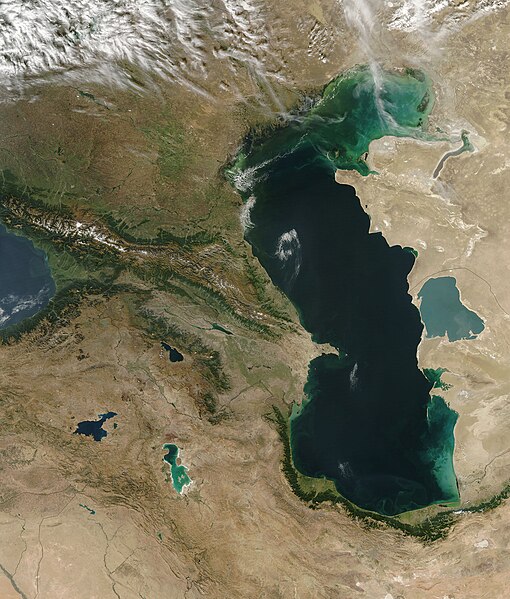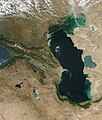Sary:Satellite image of the Caucasus-Caspian Region.jpg

Haben'ny topi-maso: 510 × 599 teboka. Habe hafa: 204 × 240 teboka | 409 × 480 teboka | 654 × 768 teboka | 872 × 1 024 teboka | 1 703 × 2 000 teboka
Rakitra niaviana (1 703 × 2 000 teboka, haben'ilay rakitra : 1,29 Mio, endrika MIME : image/jpeg)
Tantara ny rakitra
Tsindrio eo amin'ny daty/ora iray mba hijery ny toetra n'ilay rakitra tamin'io fotoana io.
| Daty sy ora | saritapaka | Habe | Mpikambana | resaka | |
|---|---|---|---|---|---|
| ankehitriny | 26 Oktobra 2005 à 05:44 |  | 1 703 × 2 000 (1,29 Mio) | Brian0918 | Caspian Sea and Georgia Sometimes referred to as the Caucasus Isthmus, the Caucasus-Caspian Region is a mixing-pot for scores of cultures. Due in part to its geographic isolation and having been in the path of numerous Eurasian migrations over the cent |
Fampiasana an'io rakitra io
Mampiasa ity rakitra ity io pejy io:
Fampiasan-drakitra maneran-tontolo
Mampiasa ity rakitra ity ireo wiki hafa ireo:
- Fampiasana eo amin'i ar.wikipedia.org
- Fampiasana eo amin'i ast.wikipedia.org
- Fampiasana eo amin'i bg.wikipedia.org
- Fampiasana eo amin'i en.wikipedia.org
- Fampiasana eo amin'i fr.wikipedia.org
- Fampiasana eo amin'i fr.wiktionary.org
- Fampiasana eo amin'i gcr.wikipedia.org
- Fampiasana eo amin'i ky.wikipedia.org
- Fampiasana eo amin'i nn.wikipedia.org
- Fampiasana eo amin'i no.wikipedia.org
- Fampiasana eo amin'i oc.wikipedia.org
- Fampiasana eo amin'i pt.wikibooks.org
- Fampiasana eo amin'i sq.wikipedia.org

